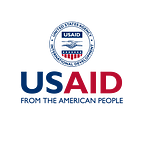10 Ways USAID Supports Routine Immunization Around the World
This is how our work extends equitable access to lifesaving vaccines
/ Karen Kasmauski, MCSP and Jhpiego
Every April, World Immunization Week is commemorated throughout the world to raise awareness and increase rates of immunization against vaccine-preventable diseases. This year, we’re raising awareness by encouraging people at every level, from the general public to the private sector, to go further in their efforts to increase immunization coverage for the greater good.
Immunization is among the most cost-effective health interventions, and has been long recognized by USAID and our partners as a cornerstone for child health and survival. When considering broader economic and social benefits, the return on investment for immunization is up to 44 times the vaccination costs, averting an estimated 2 to 3 million child deaths each year.
Despite the cost-effectiveness of immunization, an estimated 19.5 million infants worldwide, including 12.2 million infants in USAID’s focus countries, are without basic vaccinations. Additionally, global vaccination coverage has stalled at 86 percent, with no significant changes during the past year. This estimate highlights the deep coverage inequalities both between and within countries.
Keep reading for 10 specific ways USAID supports expanding access to life-saving vaccines:
1. Support to Gavi to Expand Access to Vaccines
USAID’s support to Gavi brings together the public and private sectors to champion and expand equal access to new and underutilized vaccines in lower-income countries. USAID supports the accelerated introduction of new and underutilized vaccines in 73 countries, including post-introduction evaluations and assessments. In 2016 alone, Gavi immunized 62 million children, often with more than one Gavi-supported vaccine.
2. National Vaccine Introductions
USAID provides technical assistance to partner Governments to support a smooth and effective introduction of new and underused vaccines into national immunization programs.
3. RED/REC Implementation
USAID supports the reaching every district/community strategy (RED/REC). This strategy focuses on building national capacity from the health facility and district level upward to maximize access to all vaccines — old and new — and reach hard-to-reach communities and populations.
4. Human Resource Capacity
USAID supports both in-service and pre-service training activities for front line and mid-level health workers to deliver vaccinations.
5. Data Quality and Data Use
USAID provides support for improving data quality and data use within health facilities and at the district-level. Also, USAID supports national efforts to transition to electronic health information systems, which help track vaccination efforts.
6. Cold Chain, Logistics and Vaccine Management
USAID provides technical and financial support for effective management of temperature-controlled vaccine supply chains with a focus on rural communities. Many vaccines need to stay cold to remain effective, so the ability to transport and store them in a temperature controlled environment is crucial to overall immunization efforts.
7. Demand and Community Engagement
USAID provides support to engage community health workers, community and faith leaders and organizations to generate and sustain demand for vaccines, as well as mobilize communities for immunization sessions.
8. Advisory Bodies, Coordination Mechanisms and Ad-hoc Committee
USAID advances vaccine and immunization priority issues by participating in and supporting different advisory bodies and coordinating mechanisms. USAID also serves in different working groups, ad-hoc committees and task forces at global, regional and country levels to ensure coordination and alignment of activities.
9. Immunization Policy, Guidelines and Strategy
USAID participates and provides technical and financial support for various activities around the development of immunization policies, best practices, guidelines, plans and strategies at global, regional and country levels.
10. National Reviews and Assessments
USAID provides technical and financial support for immunization reviews and assessments to ensure immunization efforts are constantly improving. USAID also supports the dissemination of key immunization program learning questions on best practices and other areas of interest.
Immunization is a central strategy to end preventable child deaths. By addressing immunization inequities to better reach the left outs and drop outs, USAID invests in the well-being of communities and societies around the globe. As a result of these efforts, we can advance American security and prosperity in an increasingly globalized world.
About the Author
Endale Beyene is a senior immunization adviser in USAID’s Maternal and Child Health and Nutrition Office.
